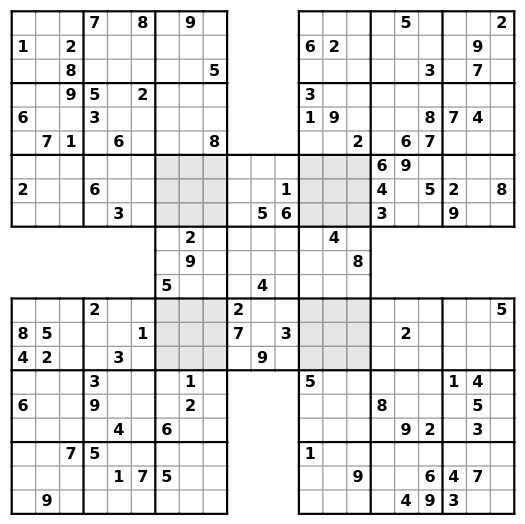Though we will restrict ourselves to sudoku examples given by pictures, a lot of sudoku problems exist that do not origin from a picture with rows, columns and blocks. The simplest example is of course a set of nine cells and one group, the set of cells itself. All solutions are permutations of the numbers 1, …, 9, and we need 8 clues when we want that the problem has a unique solution.




